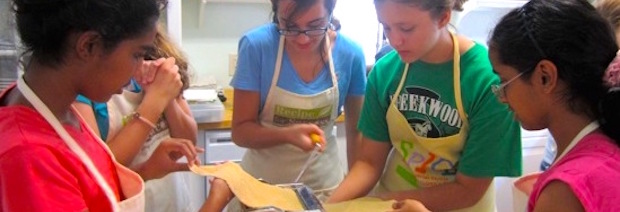First Lady Michelle Obama, catalyst and creator of the "Let's Move" campaign (focused on eliminating childhood obesity epidemic within a generation) and Secretary of Agriculture Tom Vilsack just announced the first big changes to school lunches in 15 years.
"Improving the quality of the school meals is a critical step in building a healthy future for our kids," Secretary Vilsack.
Recipe For Success Foundation's mission statement - combating childhood obesity by changing the way children understand, appreciate and eat their food- is firmly aligned with the new USDA ruling. Both campaig for those who do not yet have the power to advocate for themselves: children.
The rule - which phases in changes so as to allow all children (grades K-12), schools and food supply chains to adapt- will require most schools to "increase the availability of fruits, vegetables, whole grains, and fat-free and low-fat fluid milk and reduce the levels of sodium, saturated fat and trans fat" (Department of Agriculture Food and Nutrition Service, Vol. 77, No. 17).
The government ruling, although widely praised and long sought after, isn't necessarily a "eureka" kind of moment for many; the results of the ruling - largely based on recommendations and backed by research issued by the Food and Nutrition Board of the National Research Council of the National Academies of Science- outline changes that could be viewed simply as common sense, describing a simpler diet with an emphasis on vegetables and fruits rather than processed foods high in saturated fat and sugar. While this seemingly novel diet may be relatively easy to achieve on an individual level, it is a mammoth of a task to accomplish on a national level, especially in a sector where the consumer (in this case, schoolchildren) gains most of his or her food knowledge and eating habits from a very limited environment - the school lunchroom.
With public figures such as First Lady Michelle Obama and celebrity chefs from Alice Waters to Rachel Ray crusading for this national cause, a glimmer of hope - in the form of brightly colored veggies and fruits - seems to be peeking through the obscurity that was once a mound of colorless mystery meat.
A lot of children - especially those who qualify for school meal programs- eat two meals a day in the school lunchroom. In Houston ISD alone that means 80% of our students (or 161,600 children) will benefit. This mostly untapped corner of the education world can have a major impact on a child's relationship with food, introducing healthier dishes in a familiar setting, but the 16,000 children who have participated in RFS Seed-to-Plate Nutrition Education™ program in the last six years will be ready. They already love their veggies!
The school cafeteria will soon become an extension of our RFS classrooms.














Have a question?